15 Dec 7 important points to blow fiber optic cable far away

7 important points to blow fiber optic cable far away, let’s take a look in deep on important cable blowing tips. Cable blowing is the process of blowing the cables into telecom ducts with the help of pressurized air.
When using a cable blowing machine to install fiber optic cable over long distances, there are several important technical points to consider:
- Cable Type: Fiber optic cable is available in different types such as single-mode, multi-mode and hybrid cables, it’s important to choose the right cable type for the specific application.
- Cable Diameter: The cable diameter should be within the acceptable range for the cable blowing machine, as well as the conduit size in which the cable will be installed.
- Bend Radius: The bend radius of the cable must be considered when installing the cable to ensure that it is not bent beyond its minimum bend radius. This can cause damage to the cable and affect its performance.
- Cable Lubrication: Lubricating the cable before installation can help reduce friction and prevent damage to the cable during installation.
- Air Pressure: The air pressure used to blow the cable should be within the range recommended by the manufacturer to ensure that the cable is not damaged during installation.
- Conduit Size: The conduit size should match the cable size and should be large enough to accommodate the cable and any additional slack that may be needed for future maintenance.
- Distance: The distance of the installation must be considered, and it’s important to ensure that the cable blowing machine has the capability to blow the cable over that distance.
- Safety: Safety precautions must be taken when working with high-pressure air and cable blowing machines.
In summary, when using a cable blowing machine to install fiber optic cable over long distances, it’s important to choose the right cable type, ensure that the cable diameter is within the acceptable range, consider the bend radius, lubricate the cable, use the correct air pressure, match the conduit size, consider the distance, and take safety precautions.
When blowing fiber optic cables using a cable blowing machine at a long distance, there are several important points to consider:
- Conduit preparation: Ensure that the conduit is clean, undamaged, and free of obstructions. This will ensure that the cable can be blown through the conduit without getting snagged or kinked.
- Cable lubrication: Use a gel lubricant to reduce friction between the cable and the conduit. This will help to protect the cable from damage and also make it easier to blow through the conduit.
- Blowing head attachment: Attach the cable to the blowing head securely, ensuring that the cable will not become detached during the blowing process.
- Air pressure: Use the correct air pressure to blow the cable through the conduit. Too high of a pressure can damage the cable, while too low of a pressure will not be sufficient to push the cable through the conduit.
- Monitoring: Monitor the progress of the cable as it is blown through the conduit, checking for any issues such as snags or kinks in the cable.
- Pulling: Once the cable has been blown through the entire length of the conduit, use a pulling eye to pull the cable through the last few feet of conduit to ensure that it is properly seated.
- Testing: Perform a continuity test to ensure that the cable is functioning properly.
- Remote monitoring: In case of long-distance installations, it is important to have remote monitoring systems for the cable blowing process and troubleshoot any issues that might arise.
- Weather conditions: take into account weather conditions such as wind, rain, and temperature when planning the cable blowing installation, as they can affect the air pressure and the cable’s path.
By considering these points, you can increase the chances of a successful and efficient installation of fiber optic cables at a long distance.
Here we will give you some tips to blow your cables further with cable blowing machine, whether it’s on speed or distance, here are 7 tips to remember
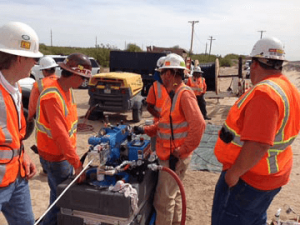
The priority is safety – 7 important points to blow fiber optic cable far away
As a fiber blowing technician, you can’t improvise! For cable blowing and preparation procedures, everyone involved must be trained. A quick reminder of the most important safety requirements for you and your team:
- Protect yourself by using eye protection, ear muffs, a helmet, and a protective suit. Local regulations and company safety norms apply, however we strongly advise that you use them to avoid injuries.
- Test the communication between the several working stations before starting the machines: safety warnings such as “STOP” or “RUN” must be completely understood.
- Before performing any work on the connections, turn off the air pressure between the compressor and the blowing machine.
You must use the suitable duct size and cable size. Cable Blowing Tips
The diameters of the cable and duct must be compatible. The percentage of fill ratio should be between 30 and 50 percent to ensure that your cable is suitable with the duct. Performances are definetely affected if sizes are below and above the specified limits.
When blowing cables, the fill ratio is calculated using areas, or d/D. For maximum performance while cable blowing, UPCOM advises using simple diameters to calculate the fill ratio, with a target range being 50% to 80%.
Percentage of occupation = (cable OD)² / (duct ID)²
The easy calculation is: 0.5*(duct ID) < (cable OD) < 0.7*(duct ID)
”cable OD” stands for “Cable Outer Diameter”
“duct ID” stands for “Duct Inner Diameter”
Be careful with your cable
Place the cable drum on a pay-off and make sure the cable will be protected against water, sun and dust while blowing. Mount a cap on the head of the cable. This cap prevents air penetration into the cable at high pressure and ensure there will be no rough contact between the cable head and the tube or the connectors.
Check your cable blowing machine
The machine must be adjusted and setted up properly to the cable and the duct you have. Here is a listing of the primary questions you shall ask yourself:
- Are the blowing machine, accessories (Cable Seal, Nutring and Duct Connection tools) and compressor suitable for the current cable and duct?
- Is it possible to reach the right level of air flow and pressure? The use of a lubrication oil is recommended.
- Do I have connections of the right type for this installation job?
- Is my stand (pay-off) suitable for the drum size?
It is good to note that between the compressor and the blowing machine, a drier and an air cooler equipment will help you to reach the greatest results.
Suitable compressor
| Type and diameter | Airflow/min | max. pressure | Air Compressor Model |
| for 8 mm microduct | 0,8 m3 | 15 bar | Kaeser M13 |
| for 8-12 mm ducts | 1 m3 | 15 bar | Kaeser M17 |
| for ducts 12-15 mm | 1,5 – 2,5 m3 | 7 bar or 14 bar | Kaeser M17 |
| for ducts 15-20 mm | 3,5 – 5 m3 | 7 bar or 10 bar | Kaeser M125 – Kaeser M17 |
| for casing pipe 32-50 mm | 7 – 11 m3 | 7 bar or 10 bar | Kaeser M125 – Kaeser M120 |
Table with the selection of the right air compressor for blower
Duct condition to be checked
When the duct has passed the gauge test, clean it to remove moisture and dirt. The best way to do so is to use sponges made for this purpose. If it is not possible to get a clean and dry duct even by repeating this operation, the duct shall be considered as inappropriate for blowing.
The quality and installation of the duct (and its accessories) are the key to a smooth and easy path without wave effects: a perfect installation should be done without bending in order to achieve the maximum blowing distance. It’s not that easy in the field and all other turns on the route affect the blowing distance. Also, be careful with the connectors as they are not designed to plug ducts in a bend.
To check the correct condition of the duct, first make sure that the outer end of the duct is secured with a trap. Then use a measuring device to check that the duct was not damaged during installation. This gauge should have a diameter that is slightly smaller than the inside diameter of the duct. A ball chain is effective for this process. It should take less than 15 minutes each. km channel at a maximum of 8 bar to complete this process. Otherwise there is a suspicion of pipelines.
After the channel passes the gauge test, clean it to remove moisture and dirt -sponges made for this purpose-. If even by repeating this process it is not possible to obtain a clean and dry canal, the canal must be considered unsuitable for blowing.
Use lubricant
Special lubricants have been developed for cable jetting to further reduce friction. Even if lubrication is time consuming, it is also a warranty of good performance and eventually of efficiency. When distance is short, lubrication can be skipped. Use the lubricant recommended by the duct manufacturer.
The quantity of lubricant must be adapted to the duct size and length, as for the provider’s recommendation. Spread the lubricant by blowing a foam carrier through the duct.
Follow the blowing procedure
We recommend to start pushing the cable at a speed between 40 and 60 m/min, without air pressure in the duct. When the speed begins to decrease, open the air inlet valve of the blowing machine to reach a pressure between 1 and 2 bars in the duct. Speed goes up to the previous value. If cable does not speed up, increase the pressure by steps of 1 bar.
All along the blowing operation, adjust the cable pushing force to regulate the rate of progression of the cable in the duct.
What to do when you cannot progress anymore, and if the target is almost achieved?
- Stop the machine and release the air pressure in the tube.
- After 5 minutes, open the air flow until the maximum air pressure is reached.
- After a few minutes, restart the machine to push the last meters.
- Repeat if necessary.
These are some cable blowing tips important to remember. Below you can find some setup videos of our machines;
Cable Blowing Tips
Advancements in Fiber Optic Technology: Improving Bandwidth and Transmission Rates
Fiber optic technology has revolutionized the way we communicate, providing faster and more reliable data transmission over long distances. The use of fiber optic cables has become increasingly popula...
No comment 0 LikesOptical Fiber
What is optical fiber? We are used to the concept of moving knowledge in numerous ways. A wire cable transports the sounds from our speech into a socket on the wall and is borne by another cabl...
No comment 8 LikesFTTH installation Technologies
FTTH installation technologies Table of Contents Innovative approach to FTTH installation Technologies…1 Infrastructure Sharing…2 Duct sharing in France…2.1 Sewer pipes…2.2 Cle...
No comment 1 LikeWhat is MPO Cable
What is MPO Cable? Executive summary Push On (MPO) Multi-fiber Connectors – Fiber connectors consisting of several optical fibers are multi-fiber push on connectors, or MPOs for short. While des...
No comment 1 LikeIP55 Outdoor Cabinet
We found out that there is no enough information about 19” IP55 Outdoor Cabinet and thus we will investigate it. If you are reading this article, then you are probably planning to make a procurement s...
No comment 1 LikeWhat is Fiber Optic Cable
What is Fiber Optic Cable? A fiber optic cable, also known as an optical fiber cable, is an assembly similar to an electrical cable, but containing one or more optical fibers that are used to c...
No comment 2 Likes19″ Rack Cabinet
What is a 19” Free Standing Rack Cabinet? 19” free standing rack cabinets provide a robust, cost-effective enclosure solution. PDU mounting or connectivity on both the front and rear of the cabinet. T...
No comment 0 LikesHow Much Does Fiber Optic Cabling Installation Cost?
On average, fiber optic cable installation costs $1 to $6 per 30cm depending on the fiber count. It’s very difficult to estimate an exact price for an entire building to be wired, however an exa...
No comment 4 LikesConstruction Products Regulation (CPR) for Cables
CPR for cables (Construction Products Regulation) for cables became a legal requirement in July 2017. CPR for fiber optic cables is having an intended use for permanent installation in buildings and c...
No comment 0 Likes5 Fan Facts About the Fiber Optic Cables
Fiber optic cables are a type of cable that use glass or plastic fibers to transmit data. Here are some interesting facts about fiber optic cables: Speed: Fiber optic cables are capable of transmittin...
No comment 4 Likes




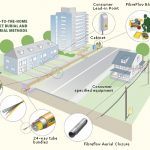

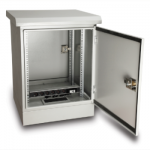

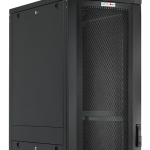
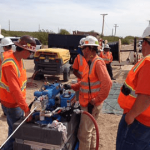

Sorry, the comment form is closed at this time.